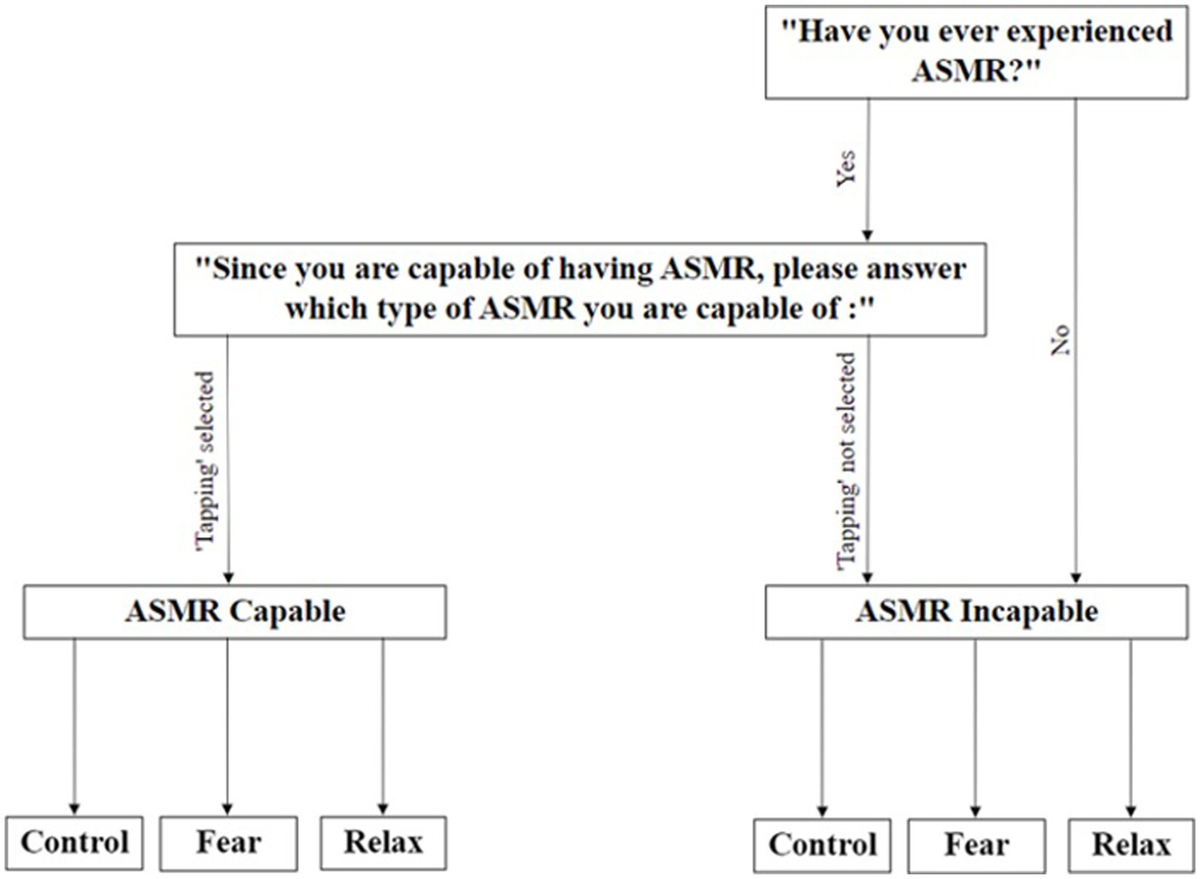Discover Pandipedia
Pandipedia is the world's first encyclopaedia of machine generated content approved by humans. You can contribute by simply searching and clicking/tapping on "Add To Pandipedia" in the answer you like. Learn More
Expand the world's knowledge as you search and help others. Go you!
Skyscanner
A comprehensive flight search engine that scans for prices on hundreds of travel sites in seconds and provides the best deals.
Google Flights
Offers a user-friendly interface to compare prices for multiple destinations and find low fares.
Holiday Pirates
Specializes in finding flight deals within Europe, catering to budget-conscious travelers[2].
Going (formerly Scott’s Cheap Flights)
Sends alerts on upcoming flight deals, primarily for US flights, to help travelers find the best deals[2].
Google Flights Explore Tool
Allows users to search for flights by entering their home airport and finding deals to various destinations on a map[2].
Student Universe
A travel agency that offers discounts for students, helping them secure cheaper airfare[2].
Flight Centre
A travel agency that assists in finding budget-friendly flight options for various routes[2].
Budget Airlines
Various carriers that may provide cheaper prices for specific routes, primarily regional travel, but often come with additional fees[2].
Travel Credit Cards
Allows users to accumulate points and miles for free flights and travel perks through credit card use[2].
Last-Minute Deal Websites
Provide access to special promotions and discounts on flights that can be used for spontaneous travel plans[2].
Flexible Date Searches
Suggests searching for flights on different dates to find lower fares, as prices can vary significantly based on timing[2].
Let's look at alternatives:
- Modify the query.
- Start a new thread.
- Remove sources (if manually added).
- Request a manual search from our human research team.

In today's competitive business landscape, retaining existing customers is essential for sustained growth and profitability. Acquiring new customers can be significantly more expensive than keeping current ones, making effective retention strategies crucial. Here, we explore the best practices for enhancing customer retention based on a synthesis of best practices drawn from various industry experts.
Understanding Customer Retention
Customer retention refers to a company's ability to keep its customers engaged and satisfied, resulting in repeat purchases. High retention rates usually translate into increased profitability. According to experts, just a small increase in retention rates can lead to substantial boosts in profitability—by anywhere from 25% to 95%[7][4]. Effective customer retention hinges on creating positive customer experiences that foster loyalty and trust.
Strategies to Enhance Customer Retention
Personalization and Customer Communication
Personalized communication has emerged as a key strategy for effective customer retention. Tailoring messages according to customer preferences and behaviors enhances customer satisfaction and loyalty[6][8]. For example, using data analytics to customize interactions can significantly improve customer experience, making each client feel valued and recognized[9].
Implementing Loyalty Programs
Loyalty programs are effective tools to reward repeat customers, offering discounts, exclusive products, or services as incentives for their continued business. Such programs not only foster loyalty but also boost the emotional connection customers have with a brand[2][8]. Brands like Sephora and Starbucks have successfully implemented tiered loyalty programs to enhance long-term engagement[6][3].
Exceptional Customer Service
Quality customer service across multiple channels—including live chat, email, and social media—is essential for building customer trust and satisfaction[9]. Rapid and effective resolution of issues contributes to a positive overall experience, leading customers to return to your business for future needs[1][4]. Training customer service teams to address complaints effectively can convert potential negative experiences into positive retention outcomes[8][6].
Collecting and Acting on Feedback

Regularly soliciting customer feedback through surveys and direct communication helps businesses understand customer needs and satisfaction levels. Addressing feedback proactively allows brands to refine their offerings, improving the customer experience[7][9]. Effective feedback mechanisms can create a continuous improvement cycle that enhances retention[6][1].
Seamless Onboarding Process
A strong onboarding experience for new customers sets the foundation for a successful long-term relationship. Businesses that invest in making this process smooth and enjoyable can significantly lower churn rates among new users[5][6]. Automating welcome messages and providing clear instructions during initial interactions can significantly impact customer retention by creating a favorable first impression.
Community Building and Engagement
Creating an online community where customers can interact and share experiences can boost engagement and loyalty. Encouraging discussions through forums and social media groups fosters a sense of belonging, enhancing the customer relationship[4][9]. Brands that connect their customers with each other create a more engaging environment that leads to improved retention.
Proactive Customer Engagement
Regular check-ins via emails, newsletters, or updates can keep customers connected to a brand. Communicating proactively about promotions, new features, or services can re-engage inactive customers and maintain active relationships with loyal ones[8][4]. Advanced analytics tools enable companies to anticipate customer needs, allowing for a tailored approach that resonates with individuals[2][6].
Rewarding Referrals
Referral programs incentivize current customers to introduce new clients to a business. Offering rewards for referrals not only helps acquire new customers but also reinforces existing customers' loyalty[5][6]. By recognizing customers who advocate for a brand, businesses can create a community of engaged patrons who contribute to both retention and growth.
Education and Value Addition
Providing valuable educational resources, such as tutorials or guides, can enhance user experience and satisfaction. When customers feel informed about how to utilize a product or service effectively, they are more likely to remain loyal[1][2]. Educational content reinforces brand expertise and adds tangible value to the customer experience.
Consistent Communication and Updates
Ensuring consistent communication about product updates, potential issues, and promotions fosters transparency and trust among customers. When customers feel informed and involved, they are less likely to churn and more likely to recommend the brand to others[8][9]. Regularly updating clients on their purchase status can also enhance their overall experience.
Conclusion
The importance of customer retention is increasingly recognized in today's marketplace, where competition for consumer attention is fierce. By implementing a multifaceted approach that includes personalization, customer service excellence, feedback mechanisms, and community building, businesses can foster a loyal customer base. These strategies not only enhance customer satisfaction but also drive repeat purchases and long-term profitability. As the landscape continues to evolve, leveraging these best practices will be crucial for businesses aiming to thrive in a competitive environment.
Let's look at alternatives:
- Modify the query.
- Start a new thread.
- Remove sources (if manually added).
- Request a manual search from our human research team.
Get more accurate answers with Super Search, upload files, personalised discovery feed, save searches and contribute to the PandiPedia.

Autonomous Sensory Meridian Response (ASMR) has gained global popularity, transcending cultural and geographical boundaries. Cultural differences play a significant role in shaping individual ASMR experiences, influencing the types of triggers that elicit ASMR sensations and the contexts in which these experiences are situated.
Diversity in ASMR Triggers
The triggers that evoke ASMR sensations exhibit considerable variation across different cultures. While certain triggers such as whispering and tapping are widely recognized, others are deeply ingrained in specific cultural traditions. For instance, indigenous practices may use rhythmic chanting, drumming, and hand movements to induce ASMR-like sensations, which are often interwoven with spiritual practices and community rituals[1]. This cultural specificity indicates that individuals may respond to various stimuli based on their cultural background and personal experiences.
Moreover, modern ASMR content on digital platforms illustrates this diversity further, as it encompasses a myriad of ASMR creators and styles that reflect different cultural aesthetics and practices. With ASMRtists creating content inspired by distinct cultural traditions, viewers engage with ASMR in ways that resonate with their own cultural identities. The incorporation of cultural elements not only diversifies ASMR content but also enhances the sense of connection and belonging among viewers from different backgrounds[2][3].
Historical Context and Cultural Resonance
Historically, ASMR-like experiences can be traced back to various folklore and spiritual practices around the globe, where sensory stimulation has been utilized for personal and communal well-being. Ancient cultures often employed music, incantations, and personal touch in their rituals, suggesting that the phenomenon of ASMR is rooted in universal human needs for relaxation, healing, and emotional resonance. These spiritual and communal contexts highlight the ways in which ASMR experiences are informed by the cultural practices prevalent in a person's society[1][2].
Cultural perception of ASMR also encompasses its historical significance. For some cultures, the ASMR experience is seen as a source of healing and is integrated into alternative therapeutic practices. This cultural framing affects how individuals approach ASMR, either as a mere sensory experience or as a more profound connection to their heritage and traditions. Thus, understanding ASMR through a cultural lens enriches its meaning and significance for individuals across the globe[3][5].
ASMR in Contemporary Digital Culture

The rise of ASMR as a social media phenomenon has further complicated its cultural dynamics. Platforms like YouTube host vast ASMR communities, bringing together individuals from diverse backgrounds and allowing for cross-cultural collaborations among ASMR creators. This environment fosters intercultural dialogue and opens up new avenues for creativity and expression within the ASMR genre[2][3].
However, the accessibility of ASMR content also raises concerns about cultural appropriation and insensitivity. Content creators must navigate cultural representations carefully, as they risk misinterpreting or oversimplifying culturally significant practices. Respect for cultural diversity in ASMR content creation is essential to foster a welcoming and inclusive community[1][4].
Psychological and Emotional Contexts

Cultural factors influence not only the triggers but also the psychological and emotional contexts in which ASMR is experienced. For example, research indicates that ASMR may serve as a coping mechanism for individuals dealing with anxiety, stress, or loneliness. In cultures where mental health issues are stigmatized, individuals may find solace in ASMR as a private way to manage their emotional states, often using it to combat feelings of isolation[2][3][8].
Interestingly, ASMR users report varying degrees of effectiveness in reducing symptoms such as anxiety. Those who identify as prone to anxiety or neuroticism often find ASMR particularly beneficial for relaxation[8]. Consequently, these relationships illustrate how the cultural understanding of emotional regulation and mental health influences the way ASMR is utilized and perceived in different societies[2][8].
Conclusion
Cultural differences profoundly influence ASMR experiences, shaping the triggers that individuals respond to and the contexts in which these sensations are understood. As ASMR continues to evolve in contemporary digital culture, it provides a platform for cross-cultural interaction and expression. Recognizing these cultural implications is crucial for understanding ASMR as a complex and multifaceted phenomenon that resonates differently across individuals and societies. By embracing cultural diversity in ASMR content and acknowledging its historical roots, a more comprehensive understanding of this unique sensory experience can be achieved.
Let's look at alternatives:
- Modify the query.
- Start a new thread.
- Remove sources (if manually added).
- Request a manual search from our human research team.

Minimalist art is characterized by extreme simplicity of form, focusing on basic geometric shapes and monochromatic color schemes. It avoids emotional expression and complex narratives, emphasizing objectivity and functionality through the use of industrial materials. Frank Stella's phrase 'What you see is what you see' encapsulates this literalism, highlighting the art object's physical properties rather than symbolic meanings[1][4][6].
Additionally, minimalism fosters a direct engagement between the viewer and the artwork, encouraging immediate visual experiences without preconceived associations. Repetitive patterns and a lack of expressive content contribute to its aesthetic of order and harmony[2][5]. This approach challenges traditional art paradigms by minimizing the artist's personal touch[3][6].
Let's look at alternatives:
- Modify the query.
- Start a new thread.
- Remove sources (if manually added).
- Request a manual search from our human research team.

Countries are addressing the mental health crisis post-pandemic by incorporating mental health and psychosocial support into their national COVID-19 response plans. According to WHO, 90% of surveyed countries included these measures, although only 17% secured additional funding for them[2][4]. Emphasis is being placed on integrating mental health services into general health care, enhancing community-based services, and utilizing telemedicine to overcome disruptions in service delivery[3][4].
Furthermore, there is a global call for increased investment in mental health to address chronic underfunding, with the WHO highlighting that pre-pandemic spending averaged just over 2% of national health budgets on mental health[2][4]. This underinvestment must be addressed to meet rising mental health demands effectively[5].
Let's look at alternatives:
- Modify the query.
- Start a new thread.
- Remove sources (if manually added).
- Request a manual search from our human research team.
Dokot Seagrass Storage Basket
A practical, environmentally friendly solution for storing everything from toys to blankets[1].
Joseph Joseph Lid Organiser
An ideal option for managing pan lids with easy installation and no need for tools[1].
Tower Kitchen Bin with Sensor Lid
A hygienic waste disposal solution featuring a motion sensor lid that opens automatically[1].
Vasagle 5 Tier Bookcase
A stylish industrial bookcase with five open shelves, suitable for any room[1].
Grey Storage Ottoman Padded Bench
An elegant storage solution that combines seating and a generous storage capacity of 120L[1].
Collapsable Clothes Drawer Organisers
Efficient storage for clothes and accessories, easily folded away when not in use[1].
Foldable Under Bed Storage Box
A durable, waterproof storage solution designed to maximize space beneath the bed[1].
Keplin 5 Tier Shoe Rack
A sturdy shoe rack that holds up to 20 pairs of shoes, with no-tools assembly[1].
Joseph Joseph Under-Shelf Spice Rack
A space-saving solution for spices that mounts under shelves, maintaining a neat kitchen[1].
Fanhao Stainless Steel Hanging Clothes Rack
A strong and stylish hanging rack with two tiers and additional hooks for versatile storage[1].
Joseph Joseph Compact Cutlery Drawer Organiser
A compact drawer organiser with five compartments for easy kitchen utensil storage[1].
32 Piece Food Storage Containers Set
An airtight set that keeps food fresh and organized, perfect for pantry management[1].
Marissa Hagmeyer Recommended Slim Rubberized Hangers
Space-saving hangers in various sizes and colors to keep your closet organized[3].
Acacia Wood Turntable
An elevated lazy Susan perfect for organizing kitchen items in upper cabinets and awkward spaces[3].
Handmade Storage Baskets
Aesthetically pleasing options for storing items like blankets or children's toys discreetly[3].
:max_bytes(150000):strip_icc():format(webp)/neat-methods-grid-baskets-61e78d40763c4892b283dfecb7efaaa8.jpg)
Grid Basket
A versatile storage solution that can be used in multiple rooms, including the pantry and laundry[3].
Adjustable Utensil Organizer
Expands to fill drawer space and organizes utensils, reducing clutter on countertops[8].
Storage System for Garages
A thorough Rubbermaid system that organizes tools and outdoor equipment[8].
:strip_icc():format(webp)/niimbot-label-maker-machine-e2d50b972ea54b30a44068e977489b00.jpg)
Label Maker
Provides clear labels to help everyone in the household know where items belong, maintaining organization[8].
:strip_icc():format(webp)/youcopia-crazy-susan-lazy-susan-organizer-1a7cdeb2042143aaa032bf7e99f84f9c.jpg)
:strip_icc():format(webp)/luxear-suction-hooks-81f0bfcec9914b3e81860796f60cb1ab.jpg)
:strip_icc():format(webp)/amazon-basics-3-tier-rolling-utility-cart-5cb04815d1b14c0eb11595bd3235a87d.jpg)
Utility Cart
A versatile cart suitable for any room, ideal for storing cleaning supplies or kitchen items[8].
:strip_icc():format(webp)/drawer-dividers-E8RteDbK4hABn-R91BkB0M-d7ff37137c164130ad7664dae6a789fe.jpg)
Drawer Dividers
Clear organizers that maximize drawer space while keeping items neatly categorized[7].
Emergency Preparedness Kit
A car organizational kit that ensures essential items are easily accessible during travel[3].
:max_bytes(150000):strip_icc():format(webp)/ohill-desk-cable-management-cord-organizer-e72e66b8e83945718247b5623f3228e0.jpg)
Under-Shelf Baskets
Useful for maximizing vertical space in pantries, allowing easy access to frequently used items[8].
Let's look at alternatives:
- Modify the query.
- Start a new thread.
- Remove sources (if manually added).
- Request a manual search from our human research team.
Get more accurate answers with Super Search, upload files, personalised discovery feed, save searches and contribute to the PandiPedia.

Art influences cultural expression by mirroring a culture's values, beliefs, and experiences, thus preserving its identity. It serves as a medium for telling stories, sharing traditions, and conveying collective memories, which strengthens community bonds and fosters a sense of belonging[2][3]. Art also challenges societal norms and inspires dialogue about social issues, making it a key tool for cultural preservation and evolution[1][4].
Moreover, engaging with art cultivates empathy and understanding across different cultures, breaking down barriers and facilitating cross-cultural dialogue[6]. This reciprocal relationship allows art to both reflect and shape cultural narratives, enabling societies to adapt while honoring their unique heritage[5].
Let's look at alternatives:
- Modify the query.
- Start a new thread.
- Remove sources (if manually added).
- Request a manual search from our human research team.

GPT-4o achieved the highest humor score among models for English datasets[3]. Clean Dataset achieved the highest humor score in Russian, followed by GPT-4o[3]. In a study, HumorSkills captions were rated only 0.08 points lower on a 5-point scale than top-rated human captions, with p=0.053[1]. This makes HumorSkills not statistically less funny than the best human captions[1].
The HumorSkills system was rated as significantly funnier than the VLM baseline, GPT-4o[1]. The study also showed that GPT-4 is capable of explaining the mechanics of jokes[2]. Another study's results indicated that humor is rooted in the frontal lobe of the cerebral cortex[4].
Let's look at alternatives:
- Modify the query.
- Start a new thread.
- Remove sources (if manually added).
- Request a manual search from our human research team.
Let's look at alternatives:
- Modify the query.
- Start a new thread.
- Remove sources (if manually added).
- Request a manual search from our human research team.

Humor is a social binding agent and an act of creativity that can provoke emotional reactions on a broad range of topics
SEAN KIM, LYDIA B. CHILTON[1]
The appropriate use of humour can facilitate social interactions
Unknown[2]

Humour is considered attractive for males in Western cultures
Unknown[2]
High levels of adaptive type humour is associated with better self-esteem, positive affect ..., as well as anxiety control and social interactions
Unknown[2]
Laughter and play can unleash creativity, thus raising morale, so in the interest of encouraging employee consent to the rigours of the labour process...
Unknown[45]
Let's look at alternatives:
- Modify the query.
- Start a new thread.
- Remove sources (if manually added).
- Request a manual search from our human research team.









































